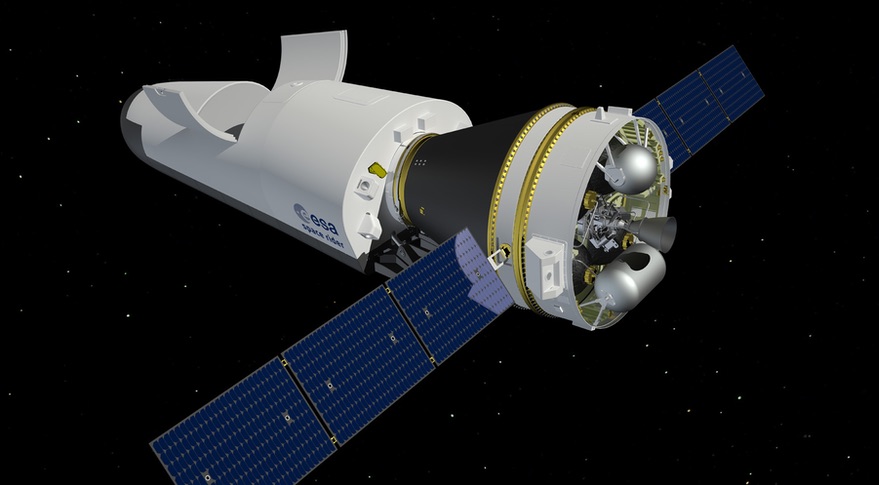Products You May Like
SEVILLE, Spain — Italy, one of the largest contributors to the European Space Agency, is pleased with the outcome of the recent ministerial meeting that provided funding for a number of its priorities, including a reusable spacecraft.
In a finally tally of contributions provided by ESA at the end of the Space19+ ministerial meeting here Nov. 28, Italy ranked third among ESA’s 22 member states, contributing 2.28 billion euros ($2.51 billion) or 15.9% of the 14.4 billion in funding provided by ESA members overall at the meeting. Only Germany, at 3.29 billion euros, and France, at 2.66 billion euros, offered more funding. The Italian funding commitment is nearly one billion euros higher than what it provided at the previous ministerial in 2016.
“We are very happy,” Giorgio Saccoccia, president of the Italian space agency ASI, said in an interview after the Space19+ meeting here Nov. 28. “What happened today at the ministerial reflects the priorities the government of Italy and the space agency is putting on space activities, which is considered a sector of great economic return for the country.”
He highlighted roles in several programs, such as Earth observation, technology development, evolution of the Vega small launch vehicle and Mars sample return. A lot of attention, though, was focused on a smaller program, called Space Rider, that seeks to develop a reusable spacecraft that can be launched into orbit and then return for a landing, somewhat similar to the existing X-37B operated by the U.S. Air Force and Sierra Nevada Corporation’s Dream Chaser under development.
Space Rider will build on the Intermediate eXperimental Vehicle, a vehicle that launched on a Vega rocket in 2015 on a suborbital flight, splashing down in the Pacific. ESA foresees launching Space Rider on a Vega C as soon as 2022 into low Earth orbit, where the spacecraft would remain for at least two months. The spacecraft, with its payload of up to 800 kilograms of experiments, would then return to Earth, gliding back to the ground under a parachute.
ESA did not disclose the total value pledged to Space Rider at the meeting, but did state that Italy is providing 75% of the total. That led to questions at the press conference at the end of Space19+ about whether Space Rider is truly a European program rather than a national program.
Jan Woerner, director general of ESA, disagreed, nothing that several countries play key roles in the agency’s overall space transportation portfolio. “Each and every member state has its specific competence, and this is good,” he said.
For Space Rider, he acknowledged that he wanted to see more member states join the program. “But what is more important for me: Space Rider will fly and land,” he said. “It’s not a national program. It’s a program of the European Space Agency within the whole space transportation package.”
Saccoccia said 10 countries decided to participate in Space Rider, pledging funding that oversubscribed the program. “It’s a good demonstration of trust,” he said. “We want to return the commitment that other countries have provided to this program into the proper distribution of activities in order to also produce growth for our partners.”
Another priority for Italy was human space exploration, where ESA committed to start work on two modules for the lunar Gateway, a telecommunications and refueling element known as ESPRIT and an international habitation, or “iHab” module ESA proposes to cooperate with Japan in development.
Both modules would be added to the Gateway in the second, “sustainable” phase of its development after NASA’s planned 2024 human lunar landing. “The reason why we made a very large contribution to the iHab module is that we want to play a role on the sustainable part of Artemis,” he said.
That work, Saccoccia said, will be in parallel with Italy’s plans to cooperate directly with NASA on other elements of Artemis. He noted Italy’s expertise in pressurized modules as one key area. “We intend to use this capacity to contribute to the early modules that will be used for the first phase of Artemis,” he said. That includes the Habitation and Logistics Outpost (HALO) element that NASA plans to award a sole-source contract to Northrop Grumman to develop. That will be based on that company’s Cygnus spacecraft, whose pressurized module is built in Italy.
“In overall terms, our country will give a great contribution to the full Artemis project,” he said.
